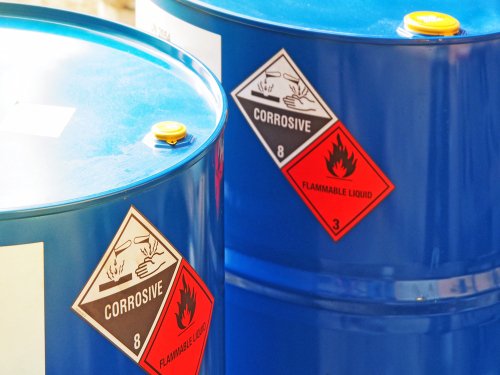Belgium, (Brussels Morning Newspaper) The amount of hazardous waste generated in the EU has continued to increase since 2004, a recent report from the European Court of Auditors (ECA) revealed.
The latest review sheds light on existing and future challenges in dealing with hazardous waste from improving classification, ensuring traceability, increasing recycling, and combating illegal trafficking.
Hazardous waste
Hazardous waste displays one or more hazardous properties; it can be explosive, irritant or toxic, thus harming human health and the environment.
Manufacturing, notably metals, water and waste treatment, construction, and mining together account for 75 % of the hazardous waste generated in the EU. This kind of nefarious waste can also be produced in households, including certain medicines, used batteries, cleaning products, and electronic appliances.
“The generation of hazardous waste is on the increase, and the EU has to address this problem. The most preferable ways to handle hazardous waste are recycling and energy recovery,” said Eva Lindström, the ECA member responsible for the review, noting that disposal should only be used as a last resort.
Lindström noted, however, that over 50 % of the EU’s hazardous waste is still simply disposed of and, while recognizing that preventing and treating hazardous waste remains challenging, the ECA official said it is a procedure that also presents opportunities.
For example, the use of digitalization to better trace hazardous waste and combat false declarations, as well as a more dissuasive sanctions mechanism, could limit the possibilities of illegal trafficking.
Additionally, a ban on all shipments of waste for disposal, which the European Commission proposed in 2021, could further contribute to reducing the trafficking of hazardous waste.
EU action
When it comes to hazardous waste, EU action has focused on influencing how economic operators design and manufacture products, on making polluters responsible for their waste, and on providing consumers with better information. Nonetheless, the ECA reports shows that these initiatives haven’t been enough to address the problem.
The auditors emphasise that classifying and tracing hazardous waste properly could help to avoid improper treatment and illegal shortcuts, but they note that hazardous waste is classified differently in different EU countries.
Moreover, EU auditors have encouraged the Commission to step up its efforts to harmonise applicable EU legislation by aligning national electronic hazardous waste registers with the planned European register for waste shipping.
Waste shipments
A new law to revise EU procedures and control measures for waste shipments was adopted by the European Parliament on January 17.
MEPs support explicitly banning shipments of all wastes destined for disposal within the EU, except if authorised in limited and well-justified cases. As for EU exports of hazardous waste to non-OECD countries, it is meant to be forbidden, should the European Council agree.
“We must turn waste into resources in the common market, and thereby take better care of our environment and competitiveness. The new rules will also make it easier for us to combat waste crime inside and outside EU,” said MEP Pernille Weiss.
The Parliament’s vote follows the Commission’s proposal, on November 17, to reform the EU rules on waste shipments.




